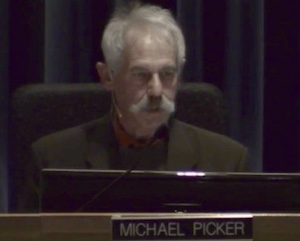
Energy.
The California Public Utilities Commission will focus on a particular kind of utility in the coming year. President Michael Picker delivered what amounts to a state-of-the-CPUC address at yesterday’s meeting, the first of the year and the first with the two newest commissioners – Martha Guzman Aceves and Clifford Rechtschaffen – on board and voting.
Picker spoke at length about new energy and environmental initiatives and, particularly, about “an emerging role in building the infrastructure to drive greenhouse gas emissions down in the California economy”. That’s clearly his passion, and introductory comments by Rechtschaffen and Guzman Aceves indicate they share it.
Still, Picker is promising something very important for broadband development in the year ahead: taking an inventory of the state’s stock of utility poles and conduit, and looking at expanding the CPUC’s role in regulating this “natural monopoly”…
For both electricity and communications, we may find that the wooden pole or the underground conduit is the last remaining natural monopoly in many parts of the state. And that’s what we do. We regulate monopolies, we insure fair rates, safe infrastructure and universal access to service.
This year we will consider a statewide census of the poles and underground conduits, and what kind of database we need in order to consider how to provide oversight to this natural monopoly…That’s a big challenge. It may be the key to true, universal access to broadband.
Picker also discussed organisational changes and, particularly, safety initiatives, including a new top level staffer in charge of safety and the establishment of a safety advocate’s office – a requirement imposed by last year’s legislation. He said the commission will add 300 new employees in the coming year, with the new safety responsibilities and the legislature’s mandate to establish a greater presence elsewhere in California, outside of its San Francisco headquarters, accounting for most of the increase.
